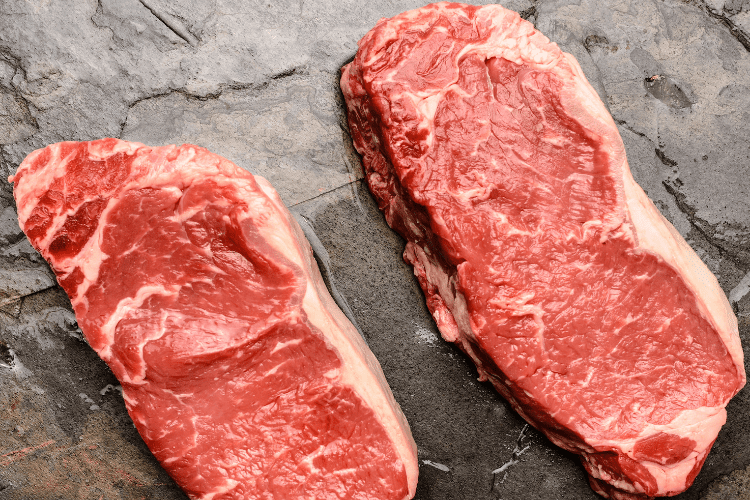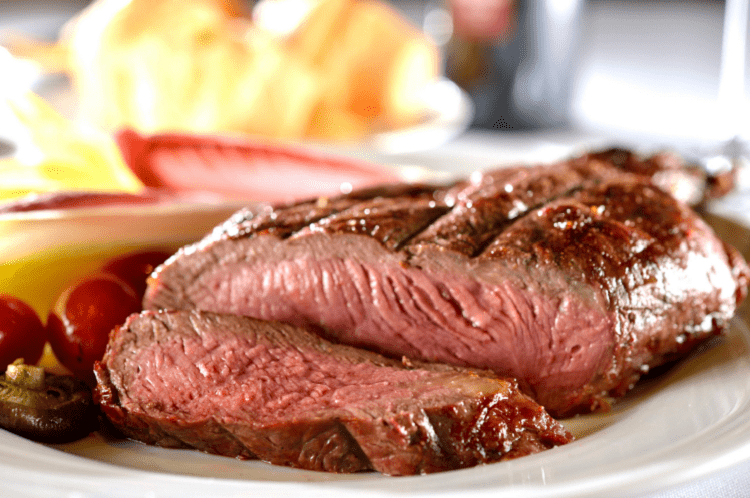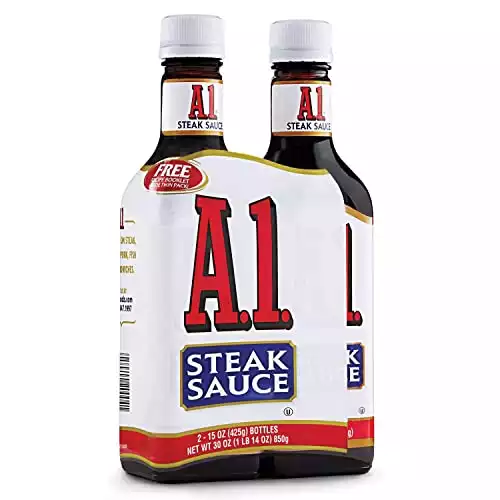- Where to Buy Whole Brisket Online - July 25, 2022
- Skirt Steak vs Flank Steak – Big Differences? - April 6, 2022
- Strip Steak Vs Ribeye: Which is Better for Date Night? - April 2, 2022
With Valentine’s Day just around the corner, have you thought about your Valentine’s dinner? Going out is always an option, but nothing says love like a home-cooked steak dinner. Today, we will look at two great steak options, the Strip Steak and the Ribeye Steak.
By the end of this article, you will be able to decide which one is the best option for impressing your date, not just on Valentine’s Day, but any day of the year. And, if you don’t have a date this year, a steak for one with a nice glass will be enough self-love to get you past valentine’s day and thinking of your change in luck for the upcoming Saint Patrick’s Day.
These are both amazingly good choices and have great flavor and tenderness. While they both come from the back of the steer they have some unique qualities that set them apart. Let’s have a deeper look into their characteristics.
What Makes Them Similar?
- Both come from the loin. More specifically the backstrap.
- Both are tender cuts that stay tender when cooked
- Both have that attractive marbling of fat that melts into the meat when cooked making them ideal tender cuts.
- These cuts can tolerate higher levels of done without losing palatability. Strip to Medium-well and Rib eye to Well-done. Still, the recommended termination is Medium-rare for the best flavor and consistency.
What Sets them Apart?

Ribeye has a nice marbling of fat throughout the entire thickness of the steak. This allows this steak to remain tender even at terminations of medium-well and well-done.
Strip steak on the other hand has a fat cap on one side which still adds some rich flavor to the steak. However, terminations higher than medium can make this leaner cut tough.
Additionally, the higher fat content in a Rib eye steak means you need to watch for grill flare-ups, while Strip steak, being leaner, means fewer worries at the grill other than not overcooking.
As you can see, the main difference between Strip and Rib eye steak is fat content. Once grilled, this aspect is less apparent visually and if they are both done to “medium-rare” the taste and tenderness is pretty darn close. The Ribeye will be just a bit more balanced with fat and beef taste and the Strip will lean towards a stronger beef flavor overall.
Strip Steak
Looking for a luxurious steak dinner? Look no further than our New York Strip Steak. Check our Crowd Cow's recipes, cooking techniques, interviews with chefs and level-up your food experience.
Also called New York Strip, Kansas City Steak, Porterhouse, or Sirloin. It is a cut from the top of the steer along the backbone called the backstrap or in butcher’s terms, primal short loin.
It is a tender cut as the muscles in this part of the steer are used less often. Strip steak is a leaner cut but some fat is intentionally left on the side. This contributes to a delicious flavor, especially on the grill. You can cut it off easily after it is cooked.
If you have ever had T-bone, you are already somewhat familiar with Strip Steak as one side of the T-bone is Strip.
Ribeye

Also known as Delmonico Steak, Market Steak, Scotch Fillet, and a few others. In the US it is most commonly referred to as Rib eye.
This cut also comes from the back, but it is located more in the upper rib cage area closer to the neck. This cut is a beauty. In fact, “beauty steak” is also one of the names it is known by. The beauty is in its amazing marbling that goes through the entire steak. This also acts like a pre-marinade.
It is also beautiful because of the taste and the ease of cooking. This is a delicious steak that is pretty forgiving on the chef because from rare to well-done, it stays tender, juicy, and full of flavor.
What to Look for when Buying
I could copy and paste the same message here for all cuts of steak. They should be red or in some cases purple (truer of grass-fed beef). If they are pale, grey, or any shade of brown they are not in good shape, and you should leave them in the store.
The fat should be bright and white. If the fat is yellow, it’s probably not as fresh as it should be, and again, leave it at the store and move on. You don’t usually get a chance to smell it till you get home, but visual inspection is usually enough. Different meats have different smells but if they are not good, you will surely know.
No need to break out the fancy cooking techniques or seasonings with this impressive cut of meat. Natural marbling and a fatty cap make it stand out as one of our most tender, juicy cuts.
How to Prepare

Ribeye
This is best done on a dual-zone gas grill or if using charcoal, distribute the coals so you have a hot side and a really hot side. These steaks are typically 1-inch cuts.
Start it on the “really hot” side and get a good sear all around. It’s considered “ideal” it gets the entire outside nice and brown, almost crisp then move to the “less hot” side to continue to cook to the termination of your desire. Remove when done and allow to rest for 5 minutes.
Alternatively, you can “reverse sear” your Ribeye Steak. This involves using your oven to begin the cooking process. Preheat your oven to 275F. Cook until the center of the steak reaches about 90F.
Now take them to a hot grill and sear them up. Get all the sides too. This creates more or less the same results but with thicker cuts (greater than 1 inch), this ensures more even cooking.
Marinating is a personal choice and on these tender steaks, I don’t think it is really necessary. Salt and pepper alone are pretty good all by themselves. I am also a pretty big fan of Montreal Steak Seasoning. This adds just a bit more of a savory flavor to the outer steak. Ribeye does not require any oil for the grill or pan. The fat is like its own non-stick spray
Strip Steak
Unlike the Ribeye, you need to keep an eye on the cooking time. This steak can be overcooked, and your dinner and your wallet will suffer the hit. Two-zone cooking is still an awesome choice. Sear the outside and move over to the less hot side to finish your cooking. Don’t have a dual-zone grill? Don’t worry about it. You can do a 1-2 minute touch to the grill on both sides.
This is more of a seal than a sear, then return to your first side and start watching your internal temp. When the temp. is about 120F its probably good to flip it again.
Unless you like it rare. If you like it medium rare you can take it to around 130F. At 135F you are still good, but I would take it off the grill before it gets any higher or you risk a tough Strip steak. Let it rest for about 5 minutes.
Like the Ribeye, marinating is a choice you can make, however, a good steak rub is about all you need. Strip has less fat internally but that outer rim of fat should be left on your steak as you cook. This will greatly enhance its flavor and moisture. Strip Steak will require a little bit of olive oil on its surface and or the grill to prevent sticking as the fat content is lower than the Ribeye.
Additional Grill Tips and Recipes

- Use a sear zone gas grill
- Strip Steak advice and a recipe for grilled brown butter balsamic onions
- Ribeye Steak advice from Cave Tools along with a few tasty recipes
FAQ’s
Answer: This cut is located in the Rib between the Chuck and the Loin. This area of the steer collects more fat and contains muscle that is not used much and so the meat is more tender than higher used muscles like those in the “Chuck”.
This is a greatly desired cut as it is among the most tender and flavorful steaks on the market. The meaty center is the “eye” of the Ribeye and is called the latissimus dorsi muscle.
Answer: Medium Rare is the gold standard in most steaks and Strip Steak is no exception to the rule. However, some cuts are more forgiving to temperature than others. A well-done Ribeye steak with not ruin anyone’s day. It is not ideal, but it will still be palatable and tender. Strip Steak is not so forgiving.
If you go past medium on a Strip steak you will be left with a tougher chewy piece of meat. Everyone else at your table will have moved on to dessert and you will still be chewing on your Strip. So, the maximum on your Strip should be 135F and it will be good.
Answer: Well, that depends on your zip code, but you are looking to pay 20-40 dollars per pound for New York Strip or Ribeye. The lower end if you cook it yourself and the higher end if you are eating in a restaurant. A typical serving size is 4 to 6oz so a pound is two generous servings, three medium servings, or 4 small servings.
Answer: Two-zone cooking is ideal. A very hot area to sear your meat and a cooler area to bring it to the desired level of done. Gas grills with a sear station are a great option. If you are a regular steak enthusiast, you won’t be sorry. The gold standard of “done” is medium-rare (130 to 135 degrees F or 55 to 57 degrees C)
Answer: Some gas grills come with an extra burner on one side of the grill that can create high heat in one zone. This is the sear zone. This zone helps to seal the meat and crisp the outside helping the steak retain its inner juiciness. The sear zone can be turned off so that the entire surface of the grill can be used for other cooking
Answer: Nothing can replace the flavor of grilling but cast-iron pans are a second-best option when it comes to perfectly cooked steaks. Cast Iron pans conduct heat very well.
You want that pan HOT before your steak hits it to get that great caramelized outer sear and this just can’t be achieved with those thin non-stick pans that are sold in mass at the stores.
Now if you are looking for that glaze that you get from cast iron and you also have a grill, you can have your steak and eat it too. (Or was that cake?) Anyway, Put the cast iron right on the grill and get it HOT. I mean HOT. If you place a drop of water in the pan it should jump all-around before it vanishes into vapor.
Place some olive oil in the pan or brush it in. You must be fast as the oil will start to smoke almost immediately, then place your steak in the pan. The steak will sizzle like mad as it touches the pan. Give it 60 to 90 seconds and turn it over.
Now you have two options. Leave it in the pan and close the lid till you reach your temperature or move the steak directly to the grill for a few minutes till it reaches your desired temp. The glaze will stay on the steak, and you will have that grill flavor plus the glaze. The best of both worlds
Conclusion
Only you know what is best for your date or you. If you want an easy cooking steak but you are worried about fat content, then go for the Strip Steak. This is the “healthy choice steak”.
Looking for a luxurious steak dinner? Look no further than our New York Strip Steak. Check our Crowd Cow's recipes, cooking techniques, interviews with chefs and level-up your food experience.
If you love a juicy tender steak both of these offer that. However, Strip steak is juicy and tender up to “medium” (135 degrees F) beyond that it will be tough and chewy. Ribeye will lose its juiciness after medium well, however, the meat will still be tender.
If you like your steak well-done then Strip steak is not a good choice. Ribeye Steak can handle being cooked “well-done” and still be amazing. Steak lovers that prefer terminations of “well-done” often prefer steak sauces like A.1. , Heinz 57, Lea&Perrins, Chimichurri, barbeque, and endless others.
So, if you know in advance your company likes their steak well-done, be sure to ask what type of steak sauce they like as well. If you don’t know in advance, A.1. is one the most popular choices to have on hand, just in case.
Original flavor A-1 Steak Sauce is a time-tested and delicious way to jazz up marinades or your favorite meatloaf recipe. Tangy and delicious, A-1 perfectly complements the flavor of your favorite beef and is a low calorie way to please any audience. This sauce just makes everything taste better.
If you are not a grill pro and want to know which one is more “fool-proof”, Ribeye is again the winner. You can cook a little longer if you feel it is underdone and if you slightly overcook it, your meal will not be ruined. It should still be a delicious meal.
In my personal opinion, I would buy the Ribeye. The price point is nearly the same and since I don’t each steak frequently, I don’t mind the higher fat content. In fact, I crave it. Fat keeps steaks moist, juicy, and the bits that drop onto the hot coals or into your gas grills will return a great smokey flavor to your meat.
No need to break out the fancy cooking techniques or seasonings with this impressive cut of meat. Natural marbling and a fatty cap make it stand out as one of our most tender, juicy cuts.
Looking for more interesting readings? Check out:




